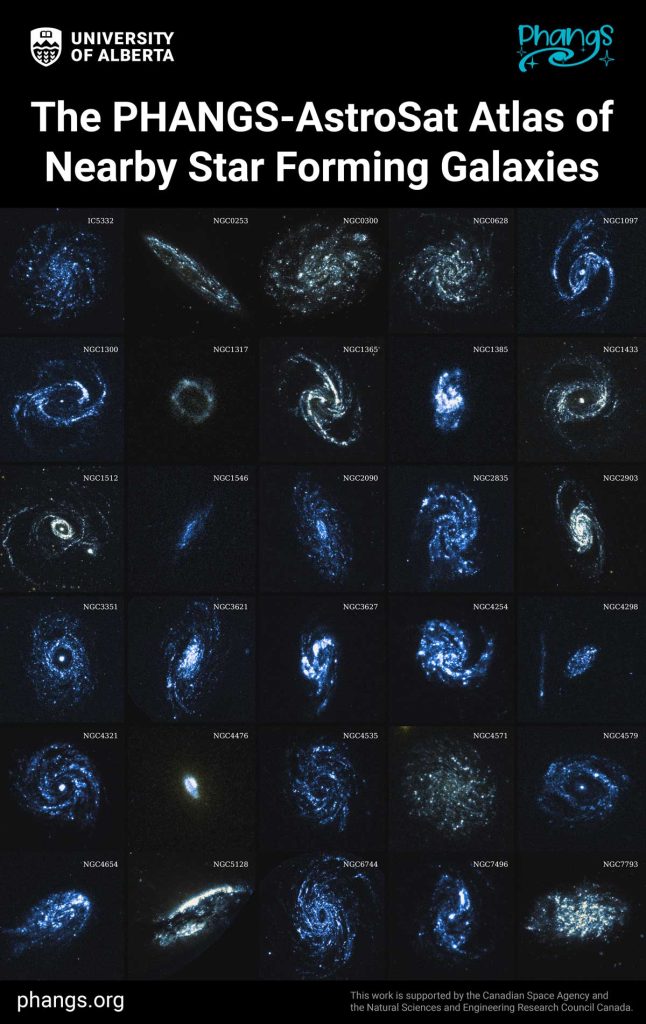Submission 2024
| Submitted by: | Hamid Hassani |
| Department: | Physics |
| Faculty: | Science |
Our project unveils the PHANGS-AstroSat atlas, a pioneering collection featuring high-resolution ultraviolet images of 31 star-forming galaxies, captured from up to 70 million light years away. Utilizing the advanced capabilities of the Ultraviolet Imaging Telescope aboard the AstroSat satellite, our atlas showcases these galaxies with unprecedented clarity. Each image has been meticulously processed to accentuate the intricate details of star formation and the structural complexities of the galaxies. One of the most striking revelations of the PHANGS-AstroSat atlas is the discovery of expansive star-forming regions that stretch well beyond the main bodies of some galaxies. This allows us to investigate the density of star-forming materials within diverse galactic features, including central bars and spiral arms.
As part of a broader research initiative integrating data from multiple major telescopes, our atlas enhances our understanding of stellar genesis and galactic evolution. It provides critical insights into the interplay between dust and star formation across various galactic environments, contributing significantly to our comprehensive understanding of galaxy.
Was your image created using Generative AI?
No.
How was your image created?
The image of the PHANGS-AstroSat atlas was created using maps of galaxies captured in both the Far Ultraviolet (FUV) and Near Ultraviolet (NUV) bands. To differentiate between these two bands, FUV is represented in blue and NUV in yellow. These maps are displayed on an asinh (inverse hyperbolic sine) brightness scale, which enhances the visibility of faint features while preserving the brightness of more luminous areas. The dynamical range of the NUV maps has been adjusted to match that of the FUV maps, with normalization based on the central wavelength ratio between FUV and NUV. This ensures consistency in cross-filter comparisons, allowing for accurate analysis of the galaxies’ features. The galaxies depicted vary in both angular and physical size, providing a diverse view of star formation and galactic structures in nearby galaxies.
This methodical approach enables a detailed examination of ultraviolet features across different galactic environments. Please see here for more details.

